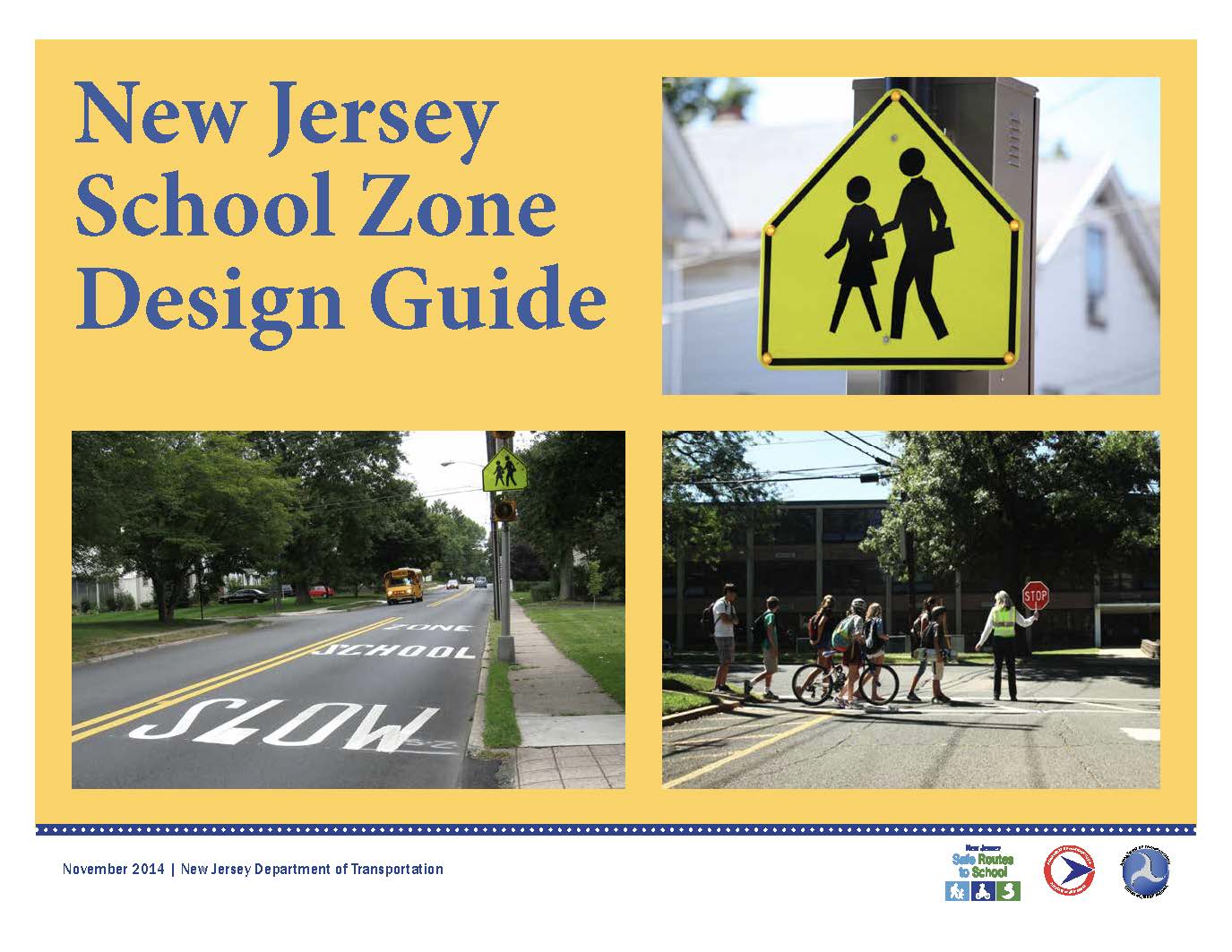The New Jersey School Zone Design Guide provides guidance for the community, government and schools involved in the effort to enable and encourage children, including those with disabilities to walk and bicycle to school. This Guide was prepared for the New Jersey Department of Transportation by the RBA Group and Fitzgerald & Halliday, Inc.
Purpose: The Guide is intended to be used as a resource for school boards, school administration, police, parents and engineers to advance the goals of the Safe Routes to School program.
- The focus is on engineering measures that can make the environment around schools safe for children and parents to walk and bicycle to school.
- The guide highlights physical improvements to the school grounds and the transportation infrastructure to improve access and safety and to minimize conflicts with motor vehicles.
- Examples range from simple sidewalk replacement/repair to more complex traffic calming such as speed humps and curb extensions.
- Illustrations of best practices were gathered from school communities across New Jersey.
New Jersey School Zone Design Guide (full report)
New Jersey School Zone Design Guide – by chapter:
Chapter 1 – Introduction and Overview
Chapter 2 – What is a School Zone?
Chapter 3 – Manual on Uniform Traffic Control Devices (MUTCD) Traffic Control for School Zones
Chapter 4 – Determining Placement of Crossing Guards
Chapter 5 – Crossing the Street
Chapter 6 – Along the Street: Types of Infrastructure Along School Routes
Chapter 8 – Students and Bicycling
Chapter 9 – The School Site and School Grounds
Chapter 10 – Crime Prevention through Environmental Design (CPTED)
Chapter 11 – Schools near Railroad Crossings
Chapter 12 – Schools near Highway Ramps

